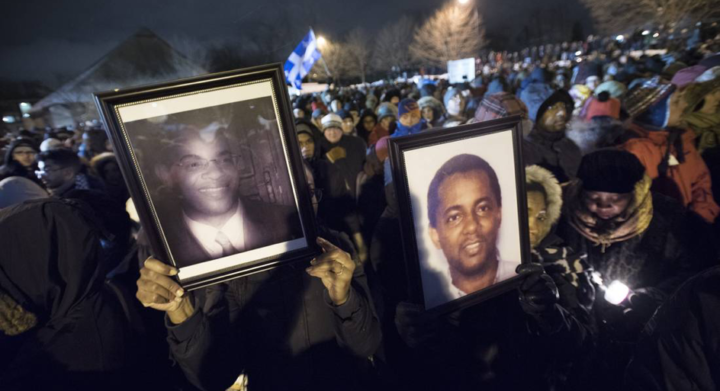The concept of ‘lone wolf terrorism’, as we understand in the contemporary, was ‘developed’ by right-wing extremists. Tom Metzger, the leader of the White Aryan Resistance, used the term ‘lone wolf’ infamously during the 1980s-1990s. Furthermore, he advocated that white supremacists should adopt a ‘lone wolf’ or ‘leaderless resistance strategy’ where the supremacists can ‘engage in criminal actions only individually or in small cells to avoid detection by law enforcement.’
Law enforcement professionals and specialised academics alike have reported that lone wolf terrorists are difficult to identify and prevent attacks for the reason that the ‘traditional’ models of profiling do not conform to that of lone wolves. There are certain patterns of behaviour and similarities between lone wolf terrorists that aid in creating a profile of the individual, however, these patterns are often identified after the horrific act is committed. In brief, lone wolf attacks are reported to be undetectable and largely unpredictable.
Examples from Canada and the United States of Lone Wolves
The purpose of this section is to draw from two separate, recent incidents of lone wolf acts of terrorisms in Canada and the United States to identify the similarities in the backgrounds and operations of the perpetrators. It must be mentioned that these incidents were chosen due to their recency in terms of occurrence and criminal prosecution.
1. Patrick Wood Crusius – 3 August 2019, Mass Shooting in El-Paso, Texas, United States
21-year-old Crusius opened fired at a Walmart store on 3 August 2019, killing 22 people in this rampage. It was reported that 19 minutes prior to the emergency call that was made, Crusius had published a ‘manifesto’ online, expressing his anti-immigrant sentiments. After his arrest, Crusius admitted to the authorities that his goal was to ‘kill as many Mexicans’ as possible.
2. Alexandre Bissonnette – 29 January 2017, Shooting in Sainte-Foy, Quebec, Canada
On 29 January 2017, the then 27-year-old Alexandre Bissonnette, entered the Quebec Islamic Cultural Centre in Sainte Foy, Quebec, Canada, and opened fired on Muslim men. Bisonnette killed six men, and has been sentenced to at least 40 years in prison. Investigations from Bissonnette’s personal computer revealed evidence of his ‘fascination with anti-immigrant alt-right and conservative commentators, and mass murder.’ Bissonnette also stated his ‘worries’ about Muslim immigration in Quebec.
Though Crusius’ and Bissonnette’s cases are merely two incidents of violence and loss of innocent lives, the similarities in their behaviours and core sentiments are to be examined. In the United States alone, it has been reported that one wolf terrorism is more lethal than organised terrorism. Individuals who are later identified as lone wolves manage to avoid arrest and do not arouse much suspicion because of their similar lifestyle as being isolated and keeping to themselves, while planning their attack alone.
Specialists report that these individuals often suffer a history of personal anguish and personal grievances, further fuelling their justifications and anger leading up to an attack. Modern online spaces, such a popular forums and chat rooms, provide a cyberspace for these individuals to spread their messages of anti-immigration sentiments and other messages of hatred. As seen in the cases of Crusius and Bissonnette, the ‘fear’ of the United States or Canada being ‘overcome’ by Mexicans or Muslims (in their case) was voiced, and was stated by the perpetrators themselves as a motivator for their attack.
As previously mentioned, the identification or prevention of an attack is rendered extremely difficult as there exists no single profile of a lone wolf. In fact, would-be perpetrators exhibit behaviours that are not uncommon to most adolescents or young adults (such as social isolation, signs of depression). Moreover, as lone wolf acts have shown to be conducted by primarily men, it would be unreasonable to expect authorities to be able to identify beyond a reasonable doubt that an individual is a lone wolf terrorist by these slim criterion.
Countering violent extremism: How is a lone wolf stopped prior to action?
Considering the foregoing, at the current stage of profiling and identification of lone wolf terrorists, it is difficult, if not impossible, to detect and halt a lone wolf terrorist attack before it happens. The reason being that lone wolves do not usually discuss their motives or ideas with others, coupled with the fact that their motivation is often only discovered tragically after an attack has happened.
However, this does not mean that there is a lack of sincere effort and measures that can be taken in the prevention of such attacks. Modern day technology plays a significant role in the dissemination of ideas and speech, therefore, there are methods in which potentially dangerous ‘hate speech’ or threats can be identified in chat rooms and reported to authorities for further investigations. It is understood that of course, this sort of monitoring is subject to certain restrictions and limitations as set out in the fundamental human rights related to privacy.
Lone wolf attacks have been reported to be rare, however, when they are carried out, they take with them many innocent lives. They are devastating and scarring to communities. The situation concerning lone wolf attacks, as it currently stands, requires further research into intervention and prevention methods, and would greatly benefit from mutual cooperation between national, international authorities and members of professional societies hailing from a variety of backgrounds.
Image Credit: Fred Lum at the Globe and Mail. A vigil held for the lives lost in the Quebec City Mosque



